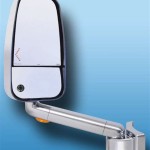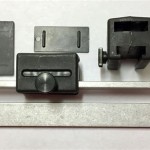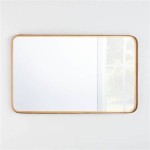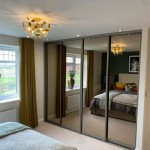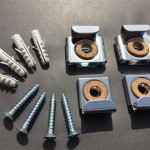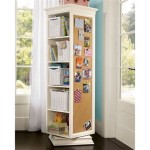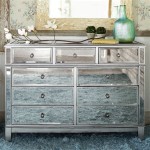Size of Full-Length Mirror
A full-length mirror is a household staple, providing functionality for checking outfits and contributing to room aesthetics. Selecting the right size is crucial for maximizing its utility and ensuring it complements the surrounding space. This article explores the standard dimensions of full-length mirrors and factors influencing size selection.
The primary purpose of a full-length mirror is to provide a complete reflection of the body. Therefore, the height is the most critical dimension. Standard full-length mirrors typically range from 50 to 72 inches in height. A 50-inch mirror might suffice for individuals of average or shorter stature, while taller individuals might require a mirror closer to 60 inches or taller to achieve a head-to-toe view. Mirrors exceeding 72 inches in height are less common for residential use but can be found in specialized stores or custom-made.
Width is the second crucial dimension to consider. Standard widths typically range from 20 to 36 inches. Narrower mirrors, around 20 inches wide, are suitable for smaller spaces or when a primarily functional mirror is desired. Wider mirrors, approaching 36 inches, provide a more expansive view, allowing for better assessment of outfits and overall appearance. Wider mirrors can also contribute to a sense of spaciousness within a room.
Beyond the standard height and width dimensions, the overall size of a full-length mirror can also be characterized by its shape and style. Rectangular mirrors are the most common, offering a classic and versatile option. Oval and round full-length mirrors, while less common, can serve as statement pieces and contribute to a particular aesthetic. These shapes often require more space due to their curved profiles.
The size of a full-length mirror should be chosen in relation to the available space in the room. In smaller rooms, a large mirror might overwhelm the space, while in larger rooms, a small mirror might appear inadequate. Measuring the intended location before purchasing a mirror is essential to ensure a proper fit. Consider leaving adequate space around the mirror for maneuvering and viewing the reflection comfortably.
The purpose of the mirror also influences the size selection. If the mirror is solely for checking outfits, a standard size with sufficient height and moderate width might suffice. However, if the mirror is intended to serve a dual purpose, such as a decorative element or to create an illusion of more space, a larger size or a particular shape might be preferable.
The style of the room and surrounding décor also play a role in determining the appropriate mirror size. A large, ornate mirror might complement a traditionally styled room, while a sleek, minimalist mirror might be more suitable for a modern space. Consider the frame material and finish to ensure it harmonizes with the existing décor.
Beyond standalone full-length mirrors, options like leaning mirrors and those integrated into wardrobes offer space-saving solutions. Leaning mirrors, as the name suggests, lean against a wall and are often adjustable, providing flexibility in placement and angle. Integrated wardrobe mirrors maximize space utilization by incorporating the mirror into the wardrobe door, eliminating the need for a separate mirror.
Another factor that often influences the perceived size of a full-length mirror is the frame. Wider frames can add substantial dimensions to the overall size of the mirror. A thin, minimalist frame might add only an inch or two to each side, while a thicker, more ornate frame could add several inches. This is an important consideration when measuring the space and ensuring the mirror fits comfortably.
The material of the frame also plays a role, although not directly in the size, it can affect the visual weight and perceived size. A dark, heavy frame can make the mirror appear larger and more imposing, while a light, thin frame can make the mirror appear smaller and less prominent. Consider the visual impact of the frame material when choosing a mirror.
Finally, budget is often a determining factor. Larger mirrors, especially those with elaborate frames or made from premium materials, typically command higher prices. Establishing a budget beforehand can help narrow down the options and ensure the selected mirror aligns with financial constraints. Exploring different retailers and comparing prices can also help identify cost-effective options without compromising on desired size and style.
Selecting the correct size of a full-length mirror requires careful consideration of several factors, including the available space, intended purpose, room style, and budget. Taking accurate measurements and understanding the interplay of these factors will ensure the selection of a mirror that is both functional and aesthetically pleasing.

Neutype 51 X16 Rectangular Full Length Floor Mirror With Stand Gold Com

Neutype 65 X 22 Gold Rectangular Full Length Floor Mirror With Stand And Aluminum Alloy Frame Com Wall

How To Choose The Size Of Full Length Mirror

Fm03 Full Length Mirror Black Chrome Frame Wall Mountable Standable Emke Emkedirect Co

Beautypeak Full Length Door Mirror 48 X14 Hanging Floor Mirrors Wall Mounted Without Stand Black Com

Neutype 47 X 22 Modern Rectangle Full Length Mirror Floor With Bracket Black Com

Shortest Mirror To See Full Length Of Your

Beautypeak 64 X21 Full Length Mirror Arched Standing Floor Black Com

Brown Polished Wall Mounted Full Length Glass Mirror For Home Size 4x1 5 Feet At Rs 5100 In Mumbai

Xramfy 24 In W X 71 H Rectangular Modern Black Aluminum Framed Rounded Full Length Mirror Fmcarc2471 Bk The Home Depot
